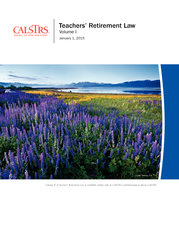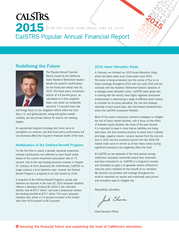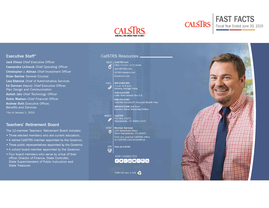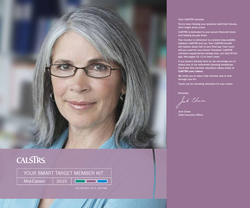Description
CalSTRS Resources
WEB
CALL
WRITE
VISIT
FAX
CalSTRS.com
Click Contact Us to email
800-228-5453
7 a.m. to 6 p.m.
Monday through Friday
CalSTRS
P.O. Box 15275
Sacramento, CA
95851-0275
Member Services
100 Waterfront Place
West Sacramento, CA 95605
916-414-5040
myCalSTRS.com
403bCompare.com
Pension2.com
STAY CONNECTED
916-414-1099
Calls from outside the U.S.
888-394-2060
CalSTRS Pension2®
Personal Wealth Plan
Find your nearest
CalSTRS office at
CalSTRS.com/localoffices
855-844-2468 (toll free)
Pension Abuse Reporting Hotline
California State Teachers’ Retirement System
COM 0377 (rev 1/16)
Printed on recycled paper
.
Personal Finance Presentations
+
Personal Finance Sub Categories
CalSTRS













